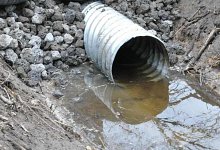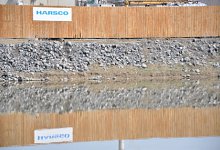
Top Ten Uses for Crushed Rock
Over the years, we have discovered many applications for our steel slag. Our customers use it for driveways, landscaping backyards, parking lots, industrial storage yards, trench backfill, chip and seal roads, roadbase, asphalt, Riprap, culverts and tornado shelters.

Steel slag mixed with soil makes an excellent support material for culverts.

If you have a project in mind requiring RipRap, limestone is not the only material to choose from. Proximity to waterways such as rivers, streams, ponds, or simply storm water runoff areas may lead to soil erosion. Steel slag has properties which lend themselves to protection of areas from soil erosion. In fact, it is superior to limestone because of its properties.
The high density of slag provides natural stability, which is further improved by the cubical interlocking nature of the material. The cubical shape also allows efficient drainage, due to interconnectability of the void space between aggregates. When mixing soil with steel slag, the material forms a reinforced block that resists the load created by soil erosion.

Steel slag is highly suited for use as a surface material or sub-ballast for railways. The material has been used throughout the American continent in this application for many years.
A rail ballast needs to be cubical in shape with a high angle of internal friction and high aggregate interlocking characteristics. This is particularly important on track curves, where the lateral forces on the track can be very high and the ballast is the structural element which maintains the longitudinal alignment.
Required Properties
The material has to be clean and sound, nominal 55mm single size, with a specified maximum 'Wet Attrition Value' of less than 15% in the USA to comply with national standards.
Steel Slag complies with the requirements of:
• American Railway Engineering Association (AREA)
• Federal Specification SS – S – 449
• Canadian National Railways (CNR) Specification 12 – 22, Slag Ballast
